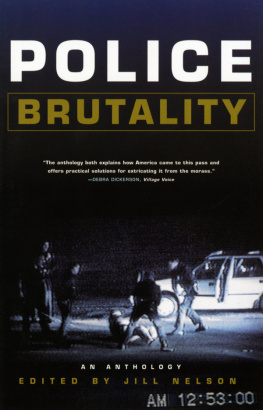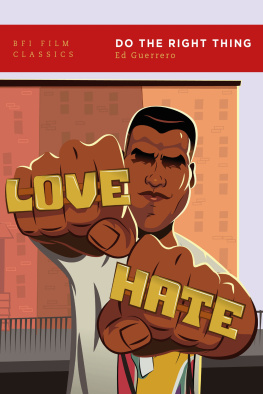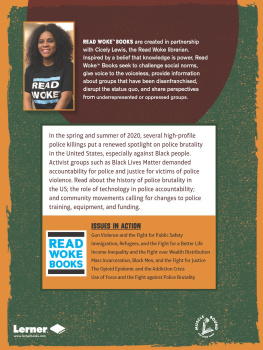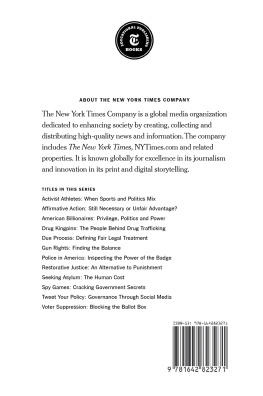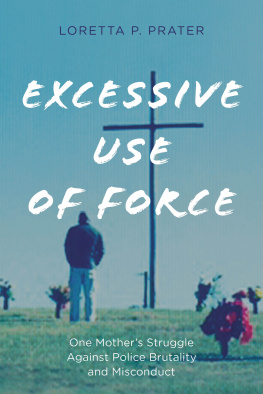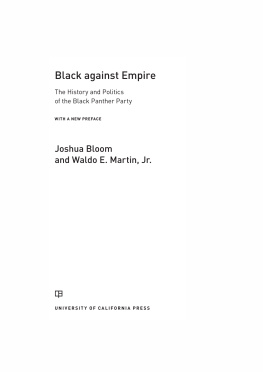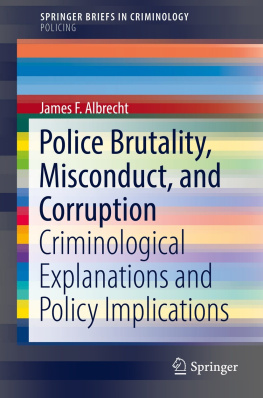



JILL NELSON
O utrage. Disgust. Sadness. These were the emotions felt by most African Americans on February 4, 1999, when they heard that Amadou Diallo, a twenty-two-year-old immigrant from Guinea, had been shot at forty-one times, and killed with nineteen bullets by members of the New York Police Departments Street Crime Unit. Yet, while shocked by the magnitude of police firepower used to kill this unarmed young man, we were not surprised. In a wide range of communities of color, being harassed, or brutalized, or even murdered by the police has never been cause for surprise. Alarm, yes, but not surprise.
We felt similar emotions ten months later when the New York State Supreme Courts Appellate Division, an all-White panel of five judges, responding to a defense motion, moved the trial of the four officers indicted for the Diallo shooting from the Bronx to Albany, New Yorks state capital. The justification? That it would be impossible to find twelve impartial jurors in the Bronx or anywhere else in New York City had a jury trial taken place. The appellate justices decided in what is, regrettably, a much too predictable way, that it would be better to move the trial to upstate Albany, an overwhelmingly white county 150 miles removed from New York, than to keep the trial in the Bronx where the shooting took place. It was hardly a surprise then to learn that Albany County is a place where African Americans and Latinos combined make up less than 14 percent of the population, an area where even fewer people of color become potential jurors, and where roughly 100 percent of police officers who go on trial are acquitted.
Nor did it come as a surprise when on February 25 the four officers who shot Amadou Diallo were each acqutted of all six charges against themfrom second-degree murder down to reckless endangermentafter the jury deliberated for two and a half days. A profound disappointment, yes, but not a surprise. We have seen this scenario played out too many times. The United States attorney in Manhattan, whose office has been monitoring the case, and the Civil Rights Division of the Justice Department will review the case to determine if any civil rights laws were violated. Diallos parents plan to file a civil lawsuit against the city, and it is possible, though unlikely, that the officers could face administrative charges within the deparment.
Surprise. Shock. Disbelief. These were the emotions felt by most White Americans when they learned of Amadou Diallos murder by the police. Theirs is a world of White privilege in which Whiteness confers not only power and opportunity but also a presumption of innocence and the right to protection. It is a world in which the police are, if not exactly friends, certainly not enemies, a world in which, more often than not, if the players are a Black person and a policeman, the policeman will receive the benefit of the doubt.
Standing on a street corner in Manhattan two days after Diallos murder, having just come from a meeting of concerned citizens to plan an organized response, I was so filled with frustration and sorrow that I turned to the woman beside me waiting for the light to change and asked What do you think about the cops shooting that man forty-one times?
She looked startled, confusedcould she not feel the palpable rage, pain, and fear that pulsed through the black veins of this city and other cities across this nation?
I dont know. I have to wait until all the facts are in. Im sure they had a reason, she finally responded.
Perhaps she saw the disgust and disappointment on my face. Stepping off the curb as the light turned green, she added, I mean, he must have done something. She was gone before I could tell her that Amadou Diallo and thousands of others didnt do anything: his crime was being Black and leaving his apartment building to go get something to eat. And of course there was no time to ask her exactly what something any human being could possibly do to warrant being shot at forty-one times by officers hired, paid, and pledged to serve and protect. She could not understand that the issue wasnt Amadou Diallos behavior but the actions of the police. I was disappointed and hurt by her words, but I was no more surprised by her response than by Diallos murder.
There is nothing new about these responses to police brutality, or about brutality itself. The Kerner Commission on Civil Disorders, appointed by President Lyndon B. Johnson to look into the cause of the urban rebellions of the 1960s, reported in 1968,
We have cited deep hostility between police and ghetto communities as a primary cause of the disorders surveyed by the Commission. In Newark, in Detroit, in Watts, in Harlemin practically every city that has experienced racial disruption since the summer of 1964abrasive relationships between police and Negroes and other minority groups have been a major source of grievance, tension and, ultimately, disorder . Police misconductwhether described as brutality, harassment, verbal abuse, or discourtesycannot be tolerated even if it is infrequent. It contributes directly to the risk of civil disorder. It is inconsistent with the basic responsibility of a police force in a democracy. Police departments must have rules prohibiting such misconduct and enforce them vigorously. Police commanders must be aware of what takes place in the field, and take firm steps to correct abuses.
The Kerner Commission Report was not the first report to identify police misconduct as a key element of the fragile relationship between police and communities of color. Yet the problem persists in this new century. In the last year alone, two New Jersey state troopers were indicted on attempted-murder and assault charges after shooting three of four Black and Latino men during a traffic stop in 1998. This incident focused national attention on the practice of racial profilingstopping drivers solely on the basis of their raceby state police, a practice prevalent across the country. The governor of New Jersey has admitted that racial profiling is commonplace.
In Los Angeles, a former member of the Los Angeles Police Department, convicted of stealing eight pounds of cocaine from a police evidence locker, told investigators that in 1996 he and a former partner intentionally shot a gang member at point-blank range, paralyzing him, and then planted a gun to make it appear that the shooting was in self-defense.
Since this case first came to light in September 1999, the growing scandal has implicated much of the LAPD, a force long notorious for abusive and excessive behavior in Black and Latino communities. While no officers have been indicted, forty criminal cases had been overturned by the district attorneys office as of February 2000, and the police concede that at least ninety-nine others have been tainted. The FBI, the United States attorney, and the state attorney general have all begun criminal investigations into police brutality in the LAPD. Lawsuits filed by those wrongly prosecuted are expected to cost Los Angeles in excess of $200 million.
In New York City, where the conduct of the NYPD was the subject of a federal investigation by the U.S. Civil Rights Commission in 1999, settlements in claims and lawsuits alleging police brutality reached a record $40 million that fiscal year alone. The number of complaints increased by 10 percent, to 2,324, the highest figure in a decade.
Next page
